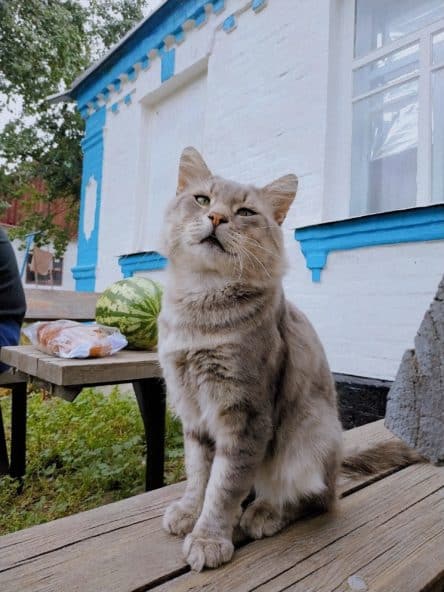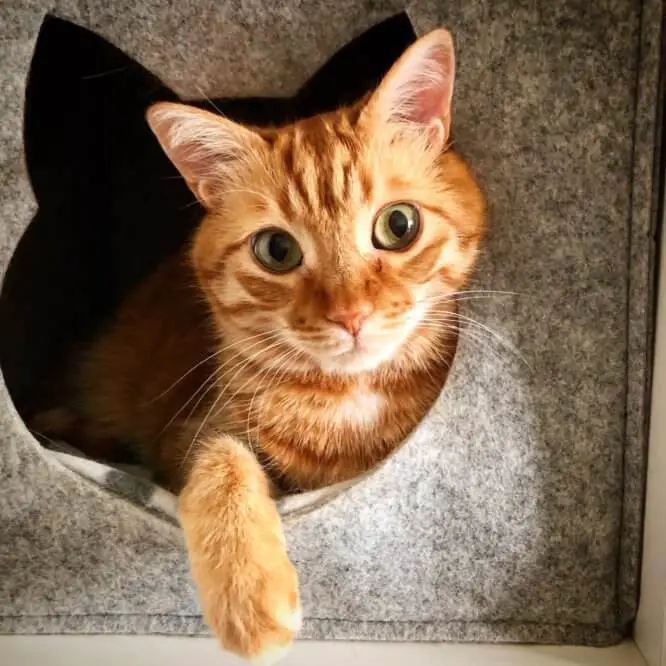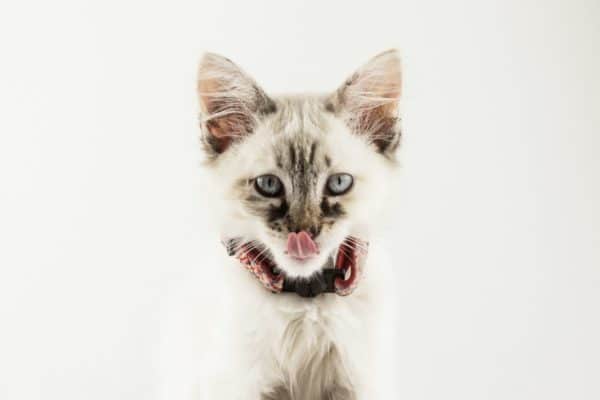While cats aren’t as voracious eaters as canines, they can sometimes take a bite of something they shouldn’t have. Maybe you saw your kitty take a taste of the fruit you left on the table. Can cats eat plumbs, or will this be toxic for them?
Not just that, but a cat might take a bite of something during playtime. When this happens, she will likely swallow whatever piece she’s taken. In the situation we’ve mentioned, you probably wonder can cats eat plumbs. Let’s check it out.
Can Cats Eat Plumbs?
Since you’re here, you probably wonder are plumbs terrible for cats.
The short answer is: Yes, plumbs are very bad for cats. In fact, even if you asked: “Are plumbs poisonous to cats?” the answer would still be “Yes.” If your cat eats any part of the plumb, such as pits or seeds, they can feel very bad in a matter of minutes.
In fact, most fruits are harmful to your kitties. This includes:
- Apricots
- Cherries
- Peach
- Grapes
Because of this, you should never give plumbs to your cats. While you shouldn’t panic, if your kitty took a bite of this fruit, you should be somewhat worried.
Why Are Plumbs Toxic to Cats?
There are several reasons why plumbs are bad for cats.
First off, cats are obligatory carnivores. In other words, they need meat to survive. Their guts can digest mostly meat, and they can have issues digesting anything else. This includes fruit.
While there are some fruit cats won’t have too many issues with, most will make them sick. This includes plumbs, as well.
At the same time, certain parts of the plumb contain cyanide.
This toxic substance can be found in plum:
- Leaves
- Stems
- Seeds
The highest concentration of cyanide is in plumb seeds. If your kitty eats them, she can get in huge trouble. This increases the chances of severe cyanide poisoning.
Not just that, but your cat can choke on plum seeds. If you see your cat eating them, stop her and take her to the vet as soon as possible.
While all plumbs are harmful to cats, wilt plumbs are the worst. This is because the amount of cyanide increases as the fruit wilts. Sadly, this is the type of fruit your kitty will most likely try to munch on.
Can Cats Eat Dried Plumbs
Since fresh and wilt plumbs are poisonous, you may wonder can cats eat dried fruit. While some dried fruit is safe for kitties, this isn’t the case for plumbs.
Plumbs can harm your cat even when dried. So, it’s better not to risk it. Don’t give your cats this fruit at all, in any shape or form. They won’t benefit from it, and their health can be at stake.
Symptoms of Plumb Poisoning

If you love this tasty fruit and have a cat, it’s essential to learn the symptoms of plumb poisoning.
This is especially important if some of your household members or guests don’t know can cats eat plumbs.
Some of the usual signs of plumb poisoning include:
- Bright red gums
- Cardiac arrest
- Collapse
- Dilated pupils
- Difficulty breathing
- Excessive panting
- Vomiting
- Shock
If you notice any of these symptoms after your cat ate plumbs, it’s important to take her to the vet as soon as possible. Otherwise, her life might be in danger.
Even if your companion doesn’t show any of these signs, try giving her some of the best cat food for a sensitive stomach. This can help her digest any toxins and prevent further gut irritations.
Plumb Poisoning Diagnosis

It’s crucial you tell your vet what your cat ate and when. When the professional is aware of what your kitty ingested, they’ll know what to look for and how to properly diagnose her. If you didn’t actually see her eat plumbs but fear this happened, observe symptoms carefully. Your description might help the vet determine what is wrong with her.
Don’t forget to tell the veterinarian when the symptoms started and if your kitty ate anything out of the ordinary. If she vomited, try collecting some of the vomit and bring it to the vet. This way, they might be able to identify what it is she vomited and why.
If you’re certain your cat ate plumbs, your vet can perform a trocarization. This is a method of testing for cyanide poisoning. The vet would remove any fluids from a cat’s stomach cavity and test it for toxins. This is a tricky procedure, as the vet needs to take care not to expose himself to the matter. Otherwise, they might contaminate it or even poison themselves. In fact, most of the time, you’d have to wear safety gear during this procedure.
Treatment
Once the vet confirms your cat is suffering from plumb poisoning, you need to begin the treatment immediately. Cyanide poisoning is often fatal, so you and the vet need to act quickly. The first thing most veterinarians do is administer 0.3 ml of amyl nitrate through a cat’s nose. This is considered an emergency procedure, and if the cat isn’t in too bad condition, he might not do this.
The best way to treat cyanide poisoning is with sodium nitrite. Your cat will get it through an IV. This is a short procedure, and it shouldn’t last for more than five minutes. After this, your cat will probably get sodium thiosulfate, a known cyanide antidote. The vet may administer this remedy orally.
If the vet connects your kitty to the respirator, don’t panic. This is so the cat can get enough oxygen during the treatment. Sometimes, cats can vomit or experience similar side effects of plumb poisoning. A respirator is the best way to ensure your pet doesn’t suffocate.
The vet will probably monitor your kitten for the several following hours to ensure she is alright. If her condition doesn’t get better, they might give her another dosage of sodium nitrate.
Recovery
While cyanide is a dangerous poison, if you’ve taken your cat to the vet on time, chances of recovery are high. She might have to stay in the vet’s office for a while just to rule out any possible side effects.
Make sure you talk to your vet about taking care of her once you get back home. Look at what you can do to help her feel better. If there is a long ride back home, get her the best cat carrier for long car travel, so she is comfortable. Just so the incident doesn’t repeat itself, remove plumbs and any plumb-related products from your home. If your pet munches on a plumb again, this time, the poisoning might be deadly. In fact, any type of poisoning would likely be fatal at this point.
Ensure your kitty is calm and safe in your home. Ask the vet if you need to modify her diet a bit while she recovers. The treatment is likely traumatic for your cat, so her stomach might become overly sensitive. It would be smart to stick to high-quality soft cat food for the time being, as this type of food is digestible.
Which Fruit Has Cyanide?
So, now that you know can cats eat plumbs, you may wonder is there any other food that can be as deadly.
Believe it or not, several types of fruit contain cyanide. Even some segments of otherwise healthy fruit are filled with this poison. These fruits (or their parts) include:
- Cherry seeds or puts
- Apple seeds
- Apricots
- Prune
- Nutmeg
- Lima beans
- Apricot pits
- Green potatoes
- Raw kidney beans
- Bitter almonds
- Nectarines
Before you give your cat any fruits, ensure you know whether some part of it is dangerous for your kitty. Remove pits and seeds from any fruit or veggie you give to your cat, just to make sure.
Read Also: Can Cats Eats Caramel
Conclusion
Now you know can cats eat plumbs – and why this isn’t a good idea. As a cat owner, you probably want nothing more than to keep your furry companion safe. To do this, it would be best to keep any toxic food, such as plumbs, away from your pets.
If you see your cat eating plumbs, don’t wait for the symptoms to appear. Take her to the vet immediately. The sooner she gets treatment, the bigger the chances of her recovery are.
